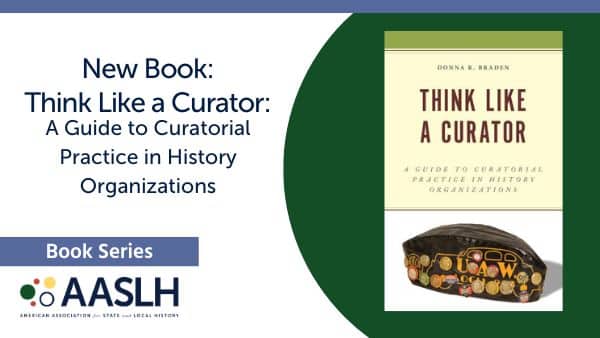 Every May 1, public historians and heritage professionals focus on the important work of emergency planning and preparedness. Historic resources and sites are valuable and irreplaceable treasures, so it’s essential to have plans and strategies in place for dealing with events that could threaten their well-being such as flooding, fire, and earthquakes. MayDay participants take this opportunity to hold disaster drills, host preparedness workshops, update disaster plans and contact lists, assess their site for risks, and talk with local emergency responders about the unique needs of their sites.
Every May 1, public historians and heritage professionals focus on the important work of emergency planning and preparedness. Historic resources and sites are valuable and irreplaceable treasures, so it’s essential to have plans and strategies in place for dealing with events that could threaten their well-being such as flooding, fire, and earthquakes. MayDay participants take this opportunity to hold disaster drills, host preparedness workshops, update disaster plans and contact lists, assess their site for risks, and talk with local emergency responders about the unique needs of their sites.
To support this crucial effort, AASLH is holding a sale on our most valued preparedness resources. May 1-6, select webinars and Technical Leaflets are discounted 30-50% to help you build your resource library and learn how to protect your history in the face of a disastrous event from experts and those who’ve been there.
[break]
 Technical Leaflet #275
Technical Leaflet #275
Staying Connected: Developing and Maintaining Emergency Contact Lists
FREE PDF Download
This leaflet by Jessica Unger tackles emergency planning and disaster preparedness with helpful checklists and prioritization tips. By thinking ahead about who you may need to contact in your community to deal with disasters and protect your collections, you can save valuable time and money. These issues are fundamental to every museum and historic site.
[break]
 Recorded Webinar
Recorded Webinar
Historic House Call: Risk Assessment in Historic Houses
FREE for members/$20 for nonmembers
Historic houses present unique issues in their preservation needs, especially in terms of disaster preparedness. This webinar explores those needs through a discussion of hazards, risk assessments and evaluations, and mitigation methods – all with a focus on historic houses. Presented by Samantha Forsko, Preservation Specialist at the Conservation Center for Art & Historic Artifacts.
[break]
 Technical Leaflet Bundle 21
Technical Leaflet Bundle 21
May Day Resources: Planning for Disaster
PDF Download $12.25 for members/$15.75 for nonmembers
This bundle includes these Technical Leaflets: TL 183 — Disaster Planning for Cultural Institutions; TL 198 — Collections Care: What To Do When You Can’t Afford to Do Anything; TL 206 — Protecting Cultural Heritage Properties from Fire; TL 219 — Closing the Barn Door: Dealing with Security Issues; TL 234 — Disaster Planning, Preparedness, and Recovery
[break]
 Recorded Webinar
Recorded Webinar
Risk Assessment and Management for Collections
$10 for members/$20 for nonmembers
Identifying and preparing for potential threats is critical for reducing risks to collections. This webianr focuses on specific risks, both natural and man-made, facing cultural institutions and mitigation strategies for addressing those vulnerabilities. An institution’s history of incidents, location, building issues, environmental factors (temperature, relative humidity, light, and mold), pest control, fire protection, security procedures, available resources, and collections-specific hazards are all be discussed. Presented by Dyani Feige, Director of Preservation Services at the Conservation Center for Art & Historic Artifacts.
[break]
 Technical Leaflet 234
Technical Leaflet 234
Disaster Planning, Preparedness, and Recovery: A Resource Guide
PDF Download $2 for members/ $3 for nonmembers
The threats museum face are numerous -from flooding to fires to chemical spills to pest infestation. Proper planning for disasters may not prevent these events but it will help museums and historical institutions in the recovery process from an unfortunate occurrence. This leaflet contains lists of resources related to specific types of disasters with brief abstracts describing each resource entry. It also contains a list of online resources that organizations can reference when writing a disaster or emergency preparedness plan.
[break]
 Recorded Webinar
Recorded Webinar
Risk Assessment: What’s Your Kryptonite?
$10 for members/$20 for nonmembers
Being prepared and identifying the potential threats to one’s institution are the best ways of reducing risks to cultural collections. Organizations cannot move ahead to the development of an emergency plan without a clear-eyed understanding of the areas where their institution is most vulnerable to loss and damage. This webinar focuses on the general risks facing cultural institutions, how to perform a site survey to identify your organization’s greatest risks, and mitigation strategies for addressing those vulnerabilities. Presented by Donia Conn, conservator and independent consultant.



